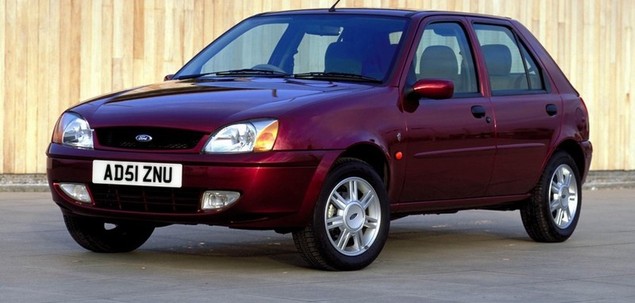Catalyst 96FB-5E211-DK/1042952 is used by the Ford brand.
It measures 36 cm in length and the weight of the insert is almost 1 kg. The construction resembles a French horn, due to the angled extension ending with a smaller outlet. The cover at the edges is flattened. The main part with the insert has 4 stripes in the form of protrusions.

Catalyst 96FB-5E211-DK/1042952 was mounted in the model Ford Fiesta IV 1996 -2002 1.3
Its price, apart from the promotion, can be observed on the website kata.
This model is one of the 10 most failing catalysts. What breaks down in it?
The second bone in the catalyst is damaged. The ceramic insert exits through the exhaust system.
Ford Fiesta are supermini sold by Ford since 1976. Seven generations were created throughout the entire production period. The car is manufactured all over the world, including Europe, Australia, Brazil, Argentina, Mexico, China, India, Thailand and South Africa.
In 2008, the seventh generation of Fiesta (Mark VII) was introduced to the automotive market.

Ford has sold over 16 million fiestas since 1976, making it one of Ford’s best-selling brands, just after Escort and F-Series.
In 1995, the fourth version debuted, which was made from a modification of its predecessor. The car appeared with a completely different, curvilinear and aerodynamic design, while maintaining the door from the previous series. The model was created in synergy with Mazda and was also sold under this brand on the Italian market under the name Mazda 121 .
The new Fiesta had to face competitors such as Citroën Saxo , Fiat Punto , Lancia Y, Nissan Micra, new generations of Opel Corsa, Seat Ibiza and Volkswagen Polo.
The new Fiesta stood out with a double airbag supplied as standard on all versions, and ABS available as an option in the entire range.
New gasoline engines were adopted, including Zetec-SE, 16 valve with double shaft made of aluminum alloy (1.2 liter 75 HP and 1.4 liter 90 HP), developed in cooperation with Yamaha and chosen “Engine of the Year”.
Particularly interesting were the rather low settings and the renewed suspension system, which guaranteed Fiesta good dynamic behavior. In the front suspension system, an additional frame was used to stiffen the structure and isolate the engine, while in the rear, a double torsion axle was used, with stiffer arms and more flexible springs to increase comfort and service.
The launch of the car was accompanied by the slogan “The era of small cars” to highlight progress compared to the previous model. In terms of performance, the 1.8-liter diesel version had acceleration from 0 to 100 km / h in 16.6 seconds and a top speed of 154 km / h, while the 1.4-liter petrol engine with 90 HP reached a top speed of 175 km / h and accelerated from 0 to 100 km / h in 11.55 seconds.
Over the years, to always keep the same starting price, even the electronic engine control has been significantly simplified and the gearbox indicators have been extended.
In 1997, Ford also produced a small coupe called Puma in the Fiesta generation.

 Phone number:
Phone number:  E-mail:
E-mail:  A stationary point:
A stationary point:  Getting from the customer:
Getting from the customer:  XRF analysis spectrometer:
XRF analysis spectrometer:  Valuation by numbers:
Valuation by numbers: 